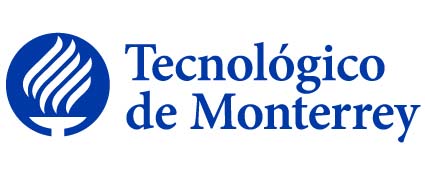
|
Curso con proyecto. Curso en el que se recomienda incorporar el uso de tecnologías de información. |
|||||
|
|||||
Disciplina asociada:Tecnologías Computacionales |
|||||
Escuela:
Ingeniería y Ciencias
|
|||||
Departamento Académico:
Computación
|
|||||
Programas académicos: |
|||||
Requisitos:(Haber Aprobado TC1010 o Haber Aprobado TE1002 o Haber Aprobado TC2016) |
|||||
Equivalencia:No tiene. |
|||||
Intención del curso en el contexto general del plan de estudios: |
|||||
|
Curso de nivel intermedio del área de sistemas interactivos diseñado para explorar el uso de tecnologías de sensado para instalaciones en entornos interactivos para el arte, la música y la actuación. A través del uso de microprocesadores y sensores habilitará la interacción con el usuario a través de interfaces no convencionales en aplicaciones diversas como medicina, arte, entretenimiento, ingeniería, diseño, educación, entre otras. Requiere conocimientos previos de diseño interactivo y programación. Como resultado de aprendizaje el alumno utilizará interfaces físicas ya existentes y diseñará nuevas interfaces útiles para interactuar con diferentes medios. |
|||||
Objetivo general de la Unidad de Formación: |
|||||
| Al finalizar el curso el alumno será capaz de identificar las características de una interfaz física de usuario y las limitantes de una interfaz gráfica de usuario. Conocerá la manera de integrar objetos de la vida diaria y medio ambiente (luz, sonido, flujo de aire o agua) para lograr una interacción humano-computadora multimodal. Diseñará, desarrollará y evaluará con usuarios un prototipo que utilice interfaces físicas para interactuar con los usuarios. | |||||
Técnica didáctica sugerida: |
|||||
| Aprendizaje orientado a proyectos | |||||
Bibliografía sugerida: |
|||||
|
LIBROS DE TEXTO: * Viscarola, Peter G., Windows NT device driver development, 1st ed., Indiana : Indianapolis, Ind. : MacMillan Technical Pub., 1999, eng, 1578700582, 9781578700585 * Egan, Janet I., Writing a UNIX device driver, 2nd ed, nyu : Wiley, 1992, eng, 0471535745 (paper : acid-free paper) |
|||||
Perfil del Profesor: |
|||||
|
(110701)Maestría en Ciencias Computacionales ; (111002)Maestría en Administración de las Telecomunicaciones ; (110101)Maestría en Ciencias Computacionales/de Información ; (140901)Maestría en Ingeniería Computacional ; (141001)Maestría en Ingeniería Eléctrica/Electrónica y Comunicaciones ; (110102)Maestría en Inteligencia Artificial /Robótica ; (110103)Maestría en Tecnología de la Información/Informática/Sistemas Computacionales ; (110701)Doctorado en Ciencias Computacionales ; (111002)Doctorado en Administración de las Telecomunicaciones ; (110101)Doctorado en Ciencias Computacionales/de Información ; (140901)Doctorado en Ingeniería Computacional ; (141001)Doctorado en Ingeniería Eléctrica/Electrónica y Comunicaciones ; (110102)Doctorado en Inteligencia Artificial /Robótica ; (110103)Doctorado en Tecnología de la Información/Informática/Sistemas Computacionales CIP: 110701, 111002, 110101, 140901, 141001, 110102, 110103 |
|||||
|
Course with project. Course in which it’s recommended to incorporate the use of information technologies. |
|||||
|
|||||
Discipline:Computer Technologies |
|||||
School:
Engineering and Sciences
|
|||||
Academic Department:
Computing
|
|||||
Programs: |
|||||
Prerequisites:( TC1010 or TE1002 or TC2016) |
|||||
Equivalences:None. |
|||||
Course intention within the general study plan context: |
|||||
|
Intermediate course in the area of interactive systems. Designed to explore the use of sensing technologies for systems in interactive environments for art, music and acting. Through the use of microprocessors and sensors will enable user interaction through unconventional interfaces in various applications such as medicine, art, entertainment, engineering, design, education, among others. Requires prior knowledge of interactive design and programming. As a result of learning the student will use existing physical interfaces and design new useful interfaces to interact with different media. |
|||||
Course objective: |
|||||
| Upon completion of this course, students will be able to identify the characteristics of a physical user interface and the limitations of a graphical user interface. Students will learn how to integrate everyday objects and those from the environment (light, sound, and air or water flow) in order to achieve a multimodal human-computer interaction. They will also design, develop, and evaluate, with users, a prototype which uses physical interfaces to interact with users. | |||||
Teaching and learning tecniques: |
|||||
| Learning-oriented projects | |||||
Suggested Bibliography: |
|||||
|
TEXT BOOKS: * Viscarola, Peter G., Windows NT device driver development, 1st ed., Indiana : Indianapolis, Ind. : MacMillan Technical Pub., 1999, eng, 1578700582, 9781578700585 * Egan, Janet I., Writing a UNIX device driver, 2nd ed, nyu : Wiley, 1992, eng, 0471535745 (paper : acid-free paper) |
|||||
Academic credentials required to teach the course: |
|||||
|
(110701)Master Degree in Computational Sciences and (111002)Master Degree in Telecommunication Management and (110101)Master Degree in Computer/Information Sciences and (140901)Master Degree in Computational Engineering and (141001)Master Degree in Electrical Engineering/ Electronics and Communications and (110102)Master Degree in Artificial Intelligence/Robotics and (110103)Master Degree in Information Technology. and (110701)Doctoral Degree in Computational Sciences and (111002)Doctoral Degree in Telecommunication Management and (110101)Doctoral Degree in Computer/Information Sciences and (140901)Doctoral Degree in Computational Engineering and (141001)Doctoral Degree in Electrical Engineering/ Electronics and Communications and (110102)Doctoral Degree in Artificial Intelligence/Robotics and (110103)Doctoral Degree in Information Technology. CIP: 110701, 111002, 110101, 140901, 141001, 110102, 110103 |
|||||